Technologies
New Comics Publisher Wants to Help Readers Feel Closer to Creators
Commentary: Why I’m excited about the publisher, called Dstlry, and the impact it could have on the comics industry.
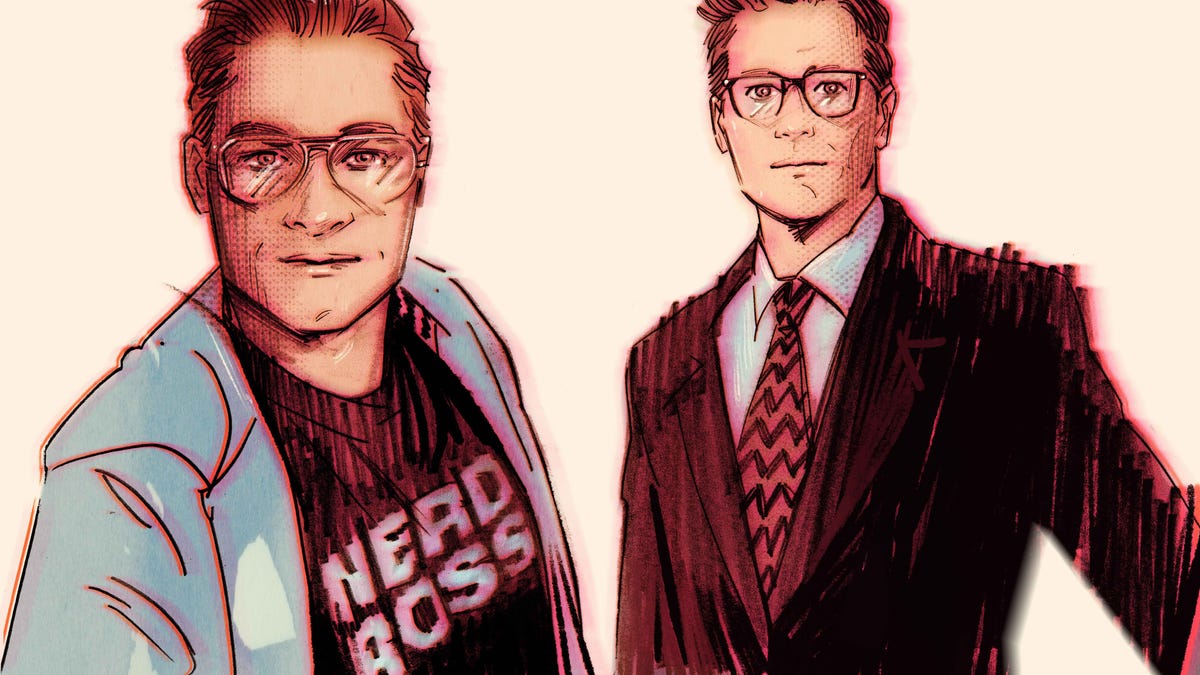
Two former Comixology heads unveiled a new creator-owned comics and collectibles publisher Thursday called Dstlry. David Steinberger, co-founder and former CEO of Comixology, and Chip Mosher, former Comixology head of content, hope the new publisher shifts the industry around creator-owned comics and collectibles.
Dstlry will offer a limited number of physical and digital items for sale online and in brick-and-mortar stores. Owners of digital items will then be able to sell their items in the Dstlry marketplace, and the original creators will get a percentage of what the item sells for.
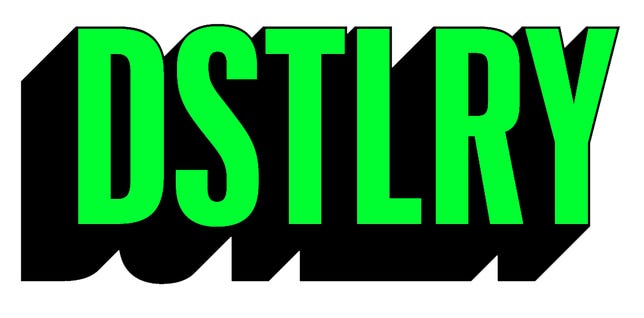

Dstlry’s logo.
DstlrySteinberger and Mosher told me in an interview they hope Dstlry can help alleviate pains some creators have felt in the comics industry when it comes to compensation. While some comic characters and stories make millions of dollars as a result of films, some creators have felt left out in the cold.
Ed Brubaker and Steve Epting, for example, transformed Bucky Barnes into the Winter Soldier in 2005. However, Brubaker wrote in his newsletter in 2021 that he feels he and Epting haven’t been adequately compensated for their work given the character’s success in multiple Marvel Cinematic Universe films and shows.
«For the most part all Steve Epting and I have gotten for creating the Winter Soldier and his storyline is a ‘thanks’ here or there,» Brubaker wrote. «I’ve even seen higher-ups on the publishing side try to take credit for my work a few times, which was pretty galling.»
Steinberger and Mosher saw these issues and wanted to be part of the solution by making sure creators are treated well so they can produce their best work for readers.
«We looked at all these problems creators had and we tried to fix that,» Mosher said. «We knew if we fix stuff for creators across the board, on a lot of different levels, then we’d be delivering the best thing for the customers.»


Ed Brubaker (pictured) and Steve Epting brought Bucky Barnes back to life as the Winter Soldier in 2005.
Jeff Kravitz/Getty Images«Without [creators] there’s nothing, and they don’t always get treated that way when their material that they create becomes $100 million movies or billion dollar movies,» Steinberger said. Dstlry is about «honoring their contribution … there’s a joy in trying to correct what is currently out there.»
Steinberger and Mosher also said they hope Dstlry will bring the fun of collecting print issues to the digital space. They said when new issues of a comic are released, digital copies of the comic will be sold online at dstlry.co for one week until the next issue comes out.
«However many digital copies get sold between Wednesday and Tuesday, that’s it, never any more again,» Mosher said.
But people will still be able to get their hands on digital issues through the Dstlry marketplace, and mass market digital trade collections will be available more broadly. Physical copies will be available in local comic shops, too. Some creators will also be given complimentary digital copies of comics they can give out to fans.
Steinberger and Mosher said they hope this will help readers feel closer to all the creators that are publishing through Dstlry.
The list of Dstlry founding creators includes well-known writers and artists like Eisner Award winners Scott Snyder, Becky Cloonan and James Tynion IV. Dstlry’s advisory board consists of film producer Lorenzo di Bonaventura, video game industry veteran John Schappert and tech strategist Mike Vorhaus.
You can find the full list of Dstlry’s founding creators at the end of this story.
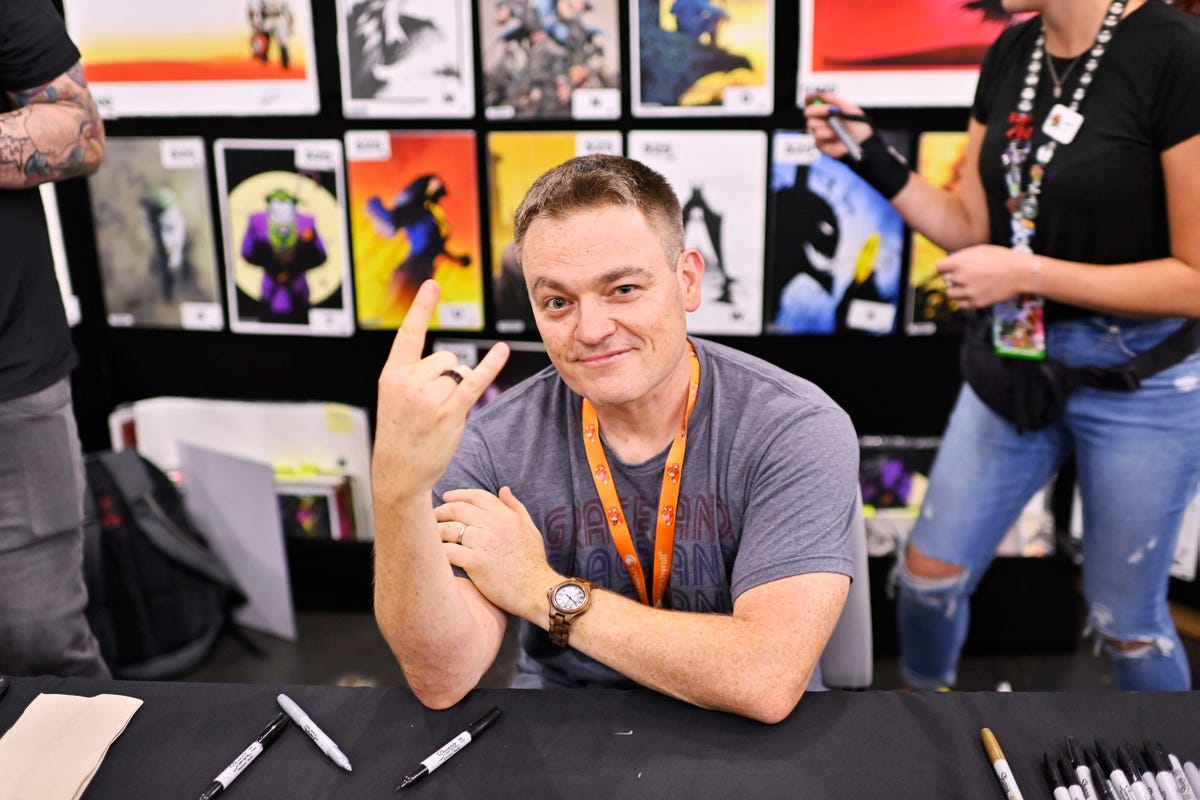

Eisner Award winner Scott Snyder is one of the founding creators of Dstlry.
Roy Rochlin/Getty Images«Artistic growth is spurred when its creators are nurtured and properly compensated for their achievements,» Bonaventura said in a news release. «This new system and its shared equity model will provide an invigorating environment which will foster great storytelling.»
And understanding how to build that kind of environment is something Steinberger and Mosher said they developed in their tenures at Comixology.
«Learning how to work with creators at a high level and do the best for them, which led to the best products, was one of the big things I learned,» Mosher said, referring to individual issues.
«You want to have empathy for [creators],» Steinberger said. «You want to understand what they need, and try to deliver that every time.»
More details about Dstlry’s plans will be revealed later this year.
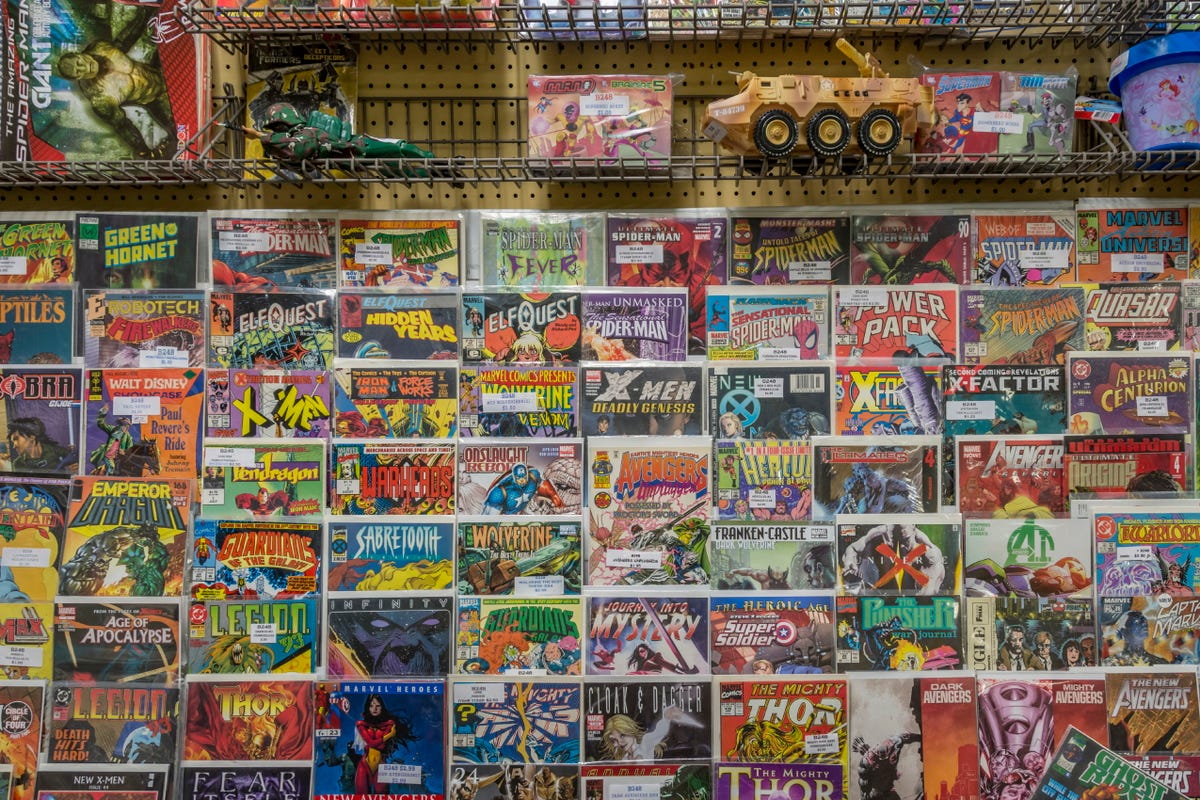

Readers will still be able to get Dstlry comics at comic shops if they want physical copies.
Getty ImagesHow Dstlry could affect the comic industry
The type of commodities market Dstlry is launching has a few advantages over other commodities markets.
Namely, other commodities depreciate in value after they’re used. Sneakers, for example, depreciate in value the second you put them on your feet. Cars also depreciate in value by as much as 9% to 11% as soon as you drive one off the lot, according to financial counseling firm Ramsey Solutions.
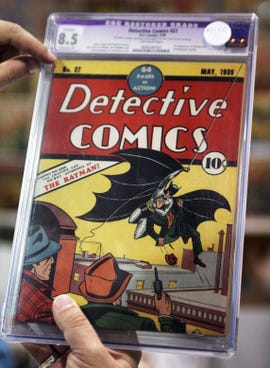

A copy of Detective Comics No. 27 sold at auction in 2022 for $1.74 million.
Spencer Weiner/Getty ImagesWith Dstlry’s model, people should be able to read a digital comic as many times as they want, then sell that comic on Dstlry’s digital marketplace for the price they bought the comic for, or higher. Looking to physical comics as an example, Detective Comics No. 27, which introduced Batman in 1939, sold at auction in May 2022 for $1.74 million. Granted, that’s an extreme example that most new comics won’t replicate anytime soon. But Dstlry wants to create a system where creators still make money from the sale — and resale — of their comics at any time.
That also means if you get into a digital series a few months after it launches, you’ll likely have to pay a higher price for an early comic in that digital series. You’ll probably have to pay more for a physical copy of that comic, too, since those are also sold in limited quantities, but that’s also often true of traditional publishers.
Admittedly, this could create a predatory resale market. That could happen if people buy as many digital copies of a comic as they can, then once the comic goes out of print, they ask for an absurd amount of money for the digital comics on the Dstlry marketplace. However, this kind of speculation led to a comics industry crash in the ’90s. People who hope to get rich from the resale of these digital comics will have to invest wisely and understand that some of the largest payoffs come after years of waiting.
The resale of digital comics on Dstlry’s marketplace should have a benefit over physical copies of comics, though.
With physical copies of comics you need plastic covers and storage space to help keep comics secure and safe, and you’ll have to be vigilant about how they’re stored if you plan on selling them after a certain amount of time.
Digital copies of comics are limited only by the amount of space on your device. And if Dstlry offers cloud storage, people won’t even have to worry about that.
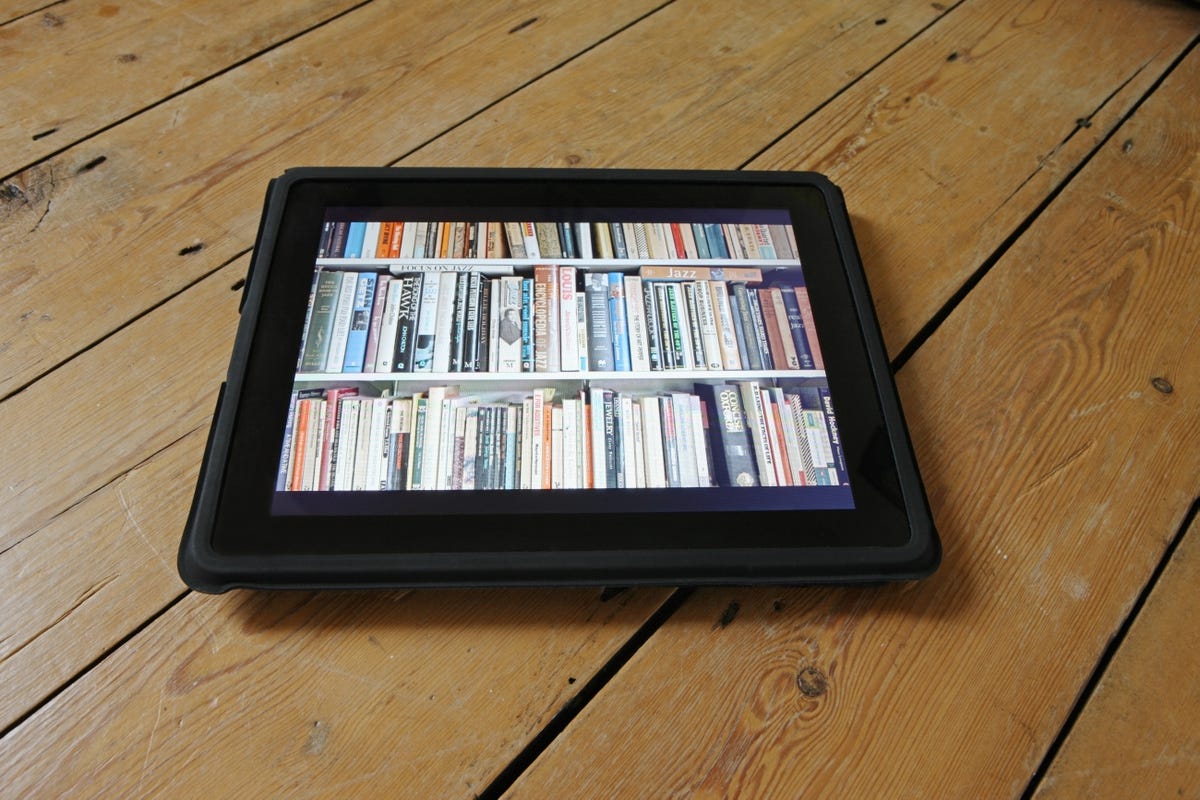

Maintaining and transporting your digital comics is easier than their physical counterparts.
Getty ImagesBesides those advantages for readers, Dstlry’s benefits for creators seem obvious, and it addresses an issue some people in the sneaker community have pointed out.
Nike made over $46 billion in revenue in 2022. Footwear made up about two-thirds of that revenue, at $29 billion. The sneaker resale market alone was estimated to be worth about $10 billion in 2021, according to Axios. It isn’t known how much estimated value Nike sneakers have on the resale market, but you can see there are huge profits in the resale market that companies like Nike are cut out of.
With Dstlry’s model, each time a digital item is resold, a percentage of that sale goes back to the creators. That means creators will benefit from their work weeks, months or even years after their digital series ends. Though the percentage of an item’s resale value that creators will receive hasn’t been disclosed at this time, any percentage is better than none.
I’m not expecting Dstlry to fix issues in the comics industry overnight, or even by the end of the year. Systemic changes take time and a lot of buy-in from others, like creators and readers.
However, I believe creators should get the full benefit from their work. It’s ridiculous that someone can get rich off something a creator made while that creator gets little or nothing in return.
I’m hopeful for Dstlry, and I plan on supporting the publisher and its creators in the future.
For more on comics, check out the best comic to read if you’re sick of superheroes, Scott Snyder’s creator-owned comic Dark Spaces: Wildfire and a graphic novel that imagines what it would look like if Jan. 6 succeeded.
Here’s the full list of Dstlry’s founding creators:
- Scott Snyder
- Tula Lotay
- James Tynion IV
- Junko Mizuno
- Ram V
- Mirka Andolfo
- Joëlle Jones
- Jock
- Becky Cloonan
- Brian Azzarello
- Elsa Charretier
- Stephanie Phillips
- Lee Garbett
- Marc Bernardin
- Jamie McKelvie
- Will Dennis (founding editor)
Technologies
Nintendo’s Pokemon Legends: Z-A Is a Hit. Just Ask My Kid
Pokemon Legends: Z-A has sucked my family in, and I can’t get my Switch controller back from my son.

I’d love to tell you all about Pokemon Legends: Z-A, arriving this week, and what it’s been like to play on the Nintendo Switch 2. I can mostly do that — but for most of the past five days, it hasn’t really been me playing. What started as co-playing together quickly turned into my kid taking over completely as he got hooked. And honestly, I’d say that’s a good sign.
Nintendo makes a lot of Pokemon games, too many for me to keep track of. But Legends Z-A is the first that’s Switch 2-optimized, although you can play on original Switches, too. I can’t tell you what that’s like, though — my early review access limited me to playing Pokemon Legends: Z-A on the Switch 2 only at home. I was doubtful about how much a city-based game would truly feel like a must-have experience, but so far it’s already become one of my favorite Pokemon games ever.
I’ll let my son tell you. He’s gotten deep into the trading card game and has played most of the recent Pokemon titles over the past year, and he says this is his favorite so far. When I asked him why, he said it’s because the game completely rethinks how battles work. The quick, real-time system feels more immediate and far less sluggish than in past Pokemon games. Plus, he’s loving the story… and honestly, so am I.
A city full of surprises
My son loves the «peculiar» storyline, the fast-paced battles (which he now wants in every Pokemon game) and the constant sense of surprise while exploring Lumiose City.
All of Pokemon Legends: Z-A (at least from what I’ve seen in my 10-plus hours so far) takes place entirely within Lumiose City — a Paris-like metropolis where the CEO of a company called Quasartico Inc. is planning to rebuild everything into a new world where Pokemon and humans can better coexist. The setup reminded me of the Detective Pikachu movie during my demo a few weeks ago, and it turns out my instincts were right.
Pokemon roam in wild zones within the city, occasionally spilling into urban areas, while mysterious rogue «Mega Evolution» Pokemon have begun appearing and threatening the city’s calm. There’s clearly a deeper mystery at play, and while I’m still uncovering it, I won’t spoil anything here.
The game seems to mostly involve a journey to level up in rank from Z to A by battling various Pokemon trainers, but that’s not the whole story. There’s a group of friends you hang out with at a local hotel, along with research missions you have to carry out. Side quests are everywhere. The city, though it can feel a bit sparse at times, stretches all the way up to its rooftops, where all sorts of hidden spots are waiting to be discovered. It feels like a living maze, and one I’m still navigating.
And the city’s always changing, too. Wild zones keep multiplying, and from day to night the city’s dynamics shift. Battles take place at night, with trainers gathering in new pop-up spots each time. It’s not as lively as I’d hoped — this isn’t Grand Theft Pokemon — but the cozy, vibrant world still makes me daydream about what a real-life Universal Pokemon theme park could someday look like.
The Pokemon shine
I keep reminding myself to take extra time to discover and level up my Pokemon. At least that’s what my son’s telling me to do. He loves how many Pokemon can become Mega Evolved in this game, and how much fun the battle moves are to pull off. I’m happy he’s happy. I thought I’d get lost in the RPG aspects of the game, but I think the real-time Pokemon battles put me in a looser state of mind, more able to explore and not feel locked down into systems and rulesets. Swapping Pokemon battle moves and reassigning them to buttons is easy, too.
The stronger focus on trainer battles — and the sheer variety of Pokemon capable of mega evolving — gives the game more of that classic, Pokemon-centered energy than Pokemon Legends: Arceus ever did. I found myself more excited to see how different Pokemon looked and behaved than to uncover new realms to explore. After all, for all of Lumiose City’s secrets, you’re spending a lot more time roaming one massive location than in any other Pokemon game I can remember. Thankfully, the visual upgrades on the Switch 2 make those Pokemon look fantastic in battle.
I do want to spend more time in Lumiose City, though, and can’t help but wonder if this is a glimpse of how all Pokemon games will keep evolving. It’s hard to say, since Legends games like Z-A and Arceus have been more experimental than the rest of the series. But, like Arceus, Z-A is now one of my favorite Pokemon games on Switch. And on Switch 2, it plays smoother and feels better than any Pokemon game ever has before.
Technologies
iPhone 17 Preorders Spike and Overall Phone Sales Aren’t Slowing Down Despite Tariffs
Global smartphone shipments saw a notable increase in the third quarter of 2025. Plus, preorders for Apple’s new iPhone 17 beat out the iPhone 16.
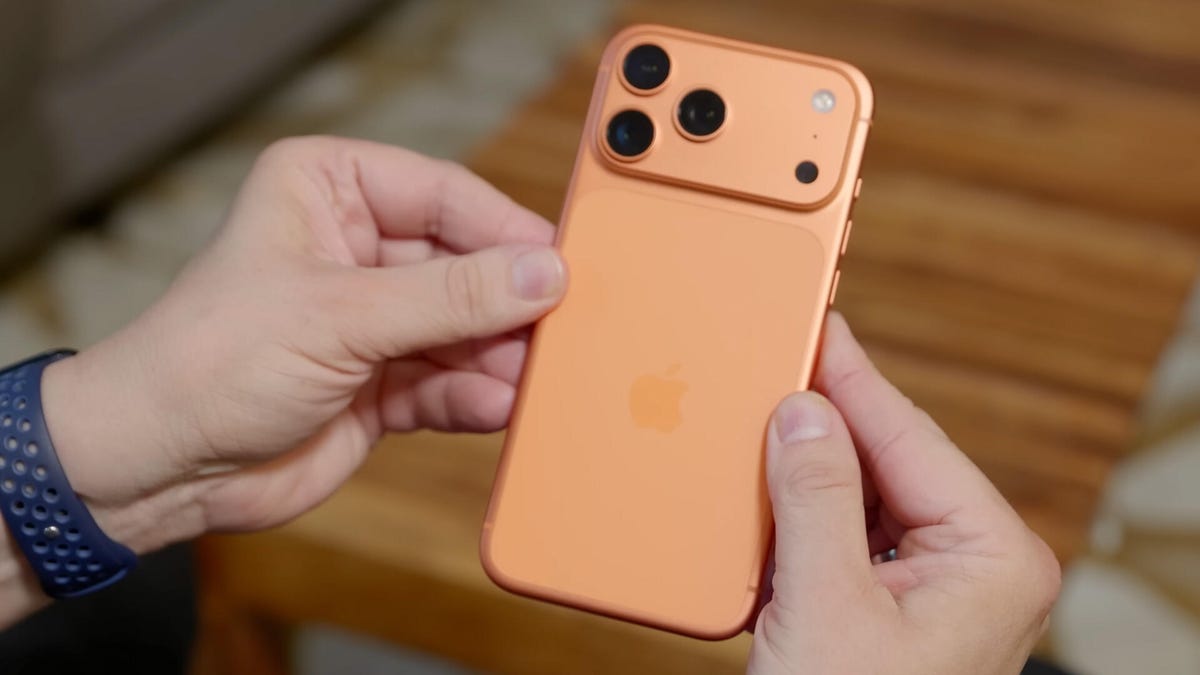
Despite tariffs and market uncertainty, global smartphone shipments increased 2.6% in the third quarter of 2025, compared to the same time last year, according to the International Data Corporation. Additionally, preorders for the iPhone 17, which launched last month, outpaced last year’s iPhone 16.
These increased sales include premium phones like the latest iPhones and Samsung foldables, suggesting yet again that pricier phones still sell in periods of economic strain. It’s a remarkable achievement, says IDC senior research director Nabila Popal, citing shrewd financing options as the reason people keep buying these high-end phones, which cost anywhere from $800 to nearly $2,000.
«[Phone makers] have mastered the art of innovation not only in hardware and software to entice upgrades but also in removing purchase friction. They have flawlessly combined cutting-edge devices with innovative financing models and aggressive trade-in programs that make the upgrading decision a ‘no-brainer’ for consumers,» Popal said in an IDC press release.
Apple sold 58.6 million iPhones this quarter, an increase of 2.9% over the same period in 2024, with more preorders for the iPhone 17 series than its predecessor. But Samsung wasn’t far behind, with its Galaxy Z Fold 7 and Galaxy Z Flip 7 selling better than all of the company’s prior foldables. The company still reigns atop the phone market with 61.4 million phones sold, representing 19% of the market in the third quarter of this year — an increase of 6.3% from the same period last year. Meanwhile, Apple lands slightly behind Samsung with 18.2% market share this quarter.
The other phone makers trailing Apple and Samsung are, in order: Xiaomi, with 13.5% of the market; Transsion, with 9%; and Vivo with 8.9%. The remaining companies in the phones industry, from Chinese stalwarts like Oppo and Honor to Motorola and Google, make up the remaining 31.4% of the market for the quarter. All told, 322.7 million phones were sold, up from 314.6 million in the third quarter of 2024, according to IDC.
IDC’s findings for the third quarter continue the small but steady growth of phone sales over the year, including a modest 1% increase in the preceding three months — which includes the April deadline when President Donald Trump unveiled sweeping tariffs. In the second quarter, IDC cited midrange devices like Samsung’s Galaxy A36 and other phones that started incorporating AI. But even persistent tariffs haven’t slowed down people’s appetites for pricier phones in the third quarter.
Technologies
Today’s NYT Mini Crossword Answers for Tuesday, Oct. 14
Here are the answers for The New York Times Mini Crossword for Oct. 14.

Looking for the most recent Mini Crossword answer? Click here for today’s Mini Crossword hints, as well as our daily answers and hints for The New York Times Wordle, Strands, Connections and Connections: Sports Edition puzzles.
Today’s Mini Crossword has an odd vertical shape, with an extra Across clue, and only four Down clues. The clues are not terribly difficult, but one or two could be tricky. Read on if you need the answers. And if you could use some hints and guidance for daily solving, check out our Mini Crossword tips.
If you’re looking for today’s Wordle, Connections, Connections: Sports Edition and Strands answers, you can visit CNET’s NYT puzzle hints page.
Read more: Tips and Tricks for Solving The New York Times Mini Crossword
Let’s get to those Mini Crossword clues and answers.
Mini across clues and answers
1A clue: Smokes, informally
Answer: CIGS
5A clue: «Don’t have ___, man!» (Bart Simpson catchphrase)
Answer: ACOW
6A clue: What the vehicle in «lane one» of this crossword is winning?
Answer: RACE
7A clue: Pitt of Hollywood
Answer: BRAD
8A clue: «Yeah, whatever»
Answer: SURE
9A clue: Rd. crossers
Answer: STS
Mini down clues and answers
1D clue: Things to «load» before a marathon
Answer: CARBS
2D clue: Mythical figure who inspired the idiom «fly too close to the sun»
Answer: ICARUS
3D clue: Zoomer around a small track
Answer: GOCART
4D clue: Neighbors of Norwegians
Answer: SWEDES
-

 Technologies3 года ago
Technologies3 года agoTech Companies Need to Be Held Accountable for Security, Experts Say
-

 Technologies3 года ago
Technologies3 года agoBest Handheld Game Console in 2023
-

 Technologies3 года ago
Technologies3 года agoTighten Up Your VR Game With the Best Head Straps for Quest 2
-

 Technologies4 года ago
Technologies4 года agoVerum, Wickr and Threema: next generation secured messengers
-

 Technologies4 года ago
Technologies4 года agoGoogle to require vaccinations as Silicon Valley rethinks return-to-office policies
-

 Technologies4 года ago
Technologies4 года agoBlack Friday 2021: The best deals on TVs, headphones, kitchenware, and more
-

 Technologies4 года ago
Technologies4 года agoOlivia Harlan Dekker for Verum Messenger
-

 Technologies4 года ago
Technologies4 года agoiPhone 13 event: How to watch Apple’s big announcement tomorrow
